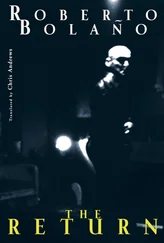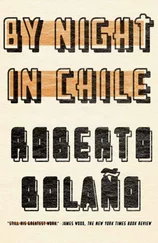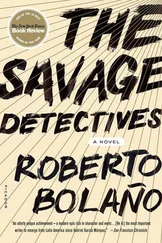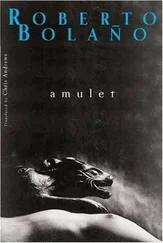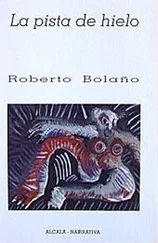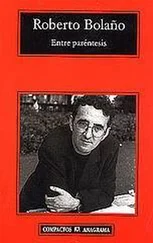Roberto Bolaño - Between Parentheses - Essays, Articles and Speeches, 1998-2003
Здесь есть возможность читать онлайн «Roberto Bolaño - Between Parentheses - Essays, Articles and Speeches, 1998-2003» весь текст электронной книги совершенно бесплатно (целиком полную версию без сокращений). В некоторых случаях можно слушать аудио, скачать через торрент в формате fb2 и присутствует краткое содержание. Год выпуска: 2011, Издательство: New Directions, Жанр: Публицистика, Критика, на английском языке. Описание произведения, (предисловие) а так же отзывы посетителей доступны на портале библиотеки ЛибКат.
- Название:Between Parentheses: Essays, Articles and Speeches, 1998-2003
- Автор:
- Издательство:New Directions
- Жанр:
- Год:2011
- ISBN:нет данных
- Рейтинг книги:4 / 5. Голосов: 1
-
Избранное:Добавить в избранное
- Отзывы:
-
Ваша оценка:
- 80
- 1
- 2
- 3
- 4
- 5
Between Parentheses: Essays, Articles and Speeches, 1998-2003: краткое содержание, описание и аннотация
Предлагаем к чтению аннотацию, описание, краткое содержание или предисловие (зависит от того, что написал сам автор книги «Between Parentheses: Essays, Articles and Speeches, 1998-2003»). Если вы не нашли необходимую информацию о книге — напишите в комментариях, мы постараемся отыскать её.
The Savage Detectives
Between Parenthese
Between Parentheses: Essays, Articles and Speeches, 1998-2003 — читать онлайн бесплатно полную книгу (весь текст) целиком
Ниже представлен текст книги, разбитый по страницам. Система сохранения места последней прочитанной страницы, позволяет с удобством читать онлайн бесплатно книгу «Between Parentheses: Essays, Articles and Speeches, 1998-2003», без необходимости каждый раз заново искать на чём Вы остановились. Поставьте закладку, и сможете в любой момент перейти на страницу, на которой закончили чтение.
Интервал:
Закладка:
It’s said that children chased him, shouting “Sodoma,” when Il Sodoma was on his way back to his studio, and then it was the women, the laundresses of Siena, who took up the name-calling, amid laughter — Sodoma, Sodoma — and soon everybody knew him by that name: a violent, brutal name that in some way matched Il Sodoma’s painting, to the point that one day Bazzi began to sign his canvases with the nickname, which he assumed with pride and in the carnivalesque spirit that would never abandon him.
His house, which was also his studio, looked more like a zoo than like the house or studio of a Renaissance painter. Through the door there was a dark passageway, wide enough to fit a horse cart, and then there was a talking raven that announced the visitors who crossed the house’s threshhold. The raven called “Sodoma, Sodoma, Sodoma,” and also “Someone’s here, someone’s here, someone’s here.” Sometimes it was shut up in a cage and other times it flew free. There was also a monkey, which roamed the inner courtyard and climbed in and out of the windows, and which Il Sodoma had surely bought from some African traveler. And there was a donkey (a theological donkey, said its owner) and a horse and a multitude of cats and dogs, and birds of many species hanging in cages on the walls inside and outside of the house. It was said that he had a tiger or a tigrillo , but this is doubtful. Most extraordinary, however, was the raven, which every visitor wanted to hear talk. For days on end it might lapse into an obstinate silence, but at other times it was capable of reciting the verse of Cavalcanti. Never, so far as anyone knows, did it relinquish its duties as gatekeeper, and this was how the neighbors were informed of Sodoma’s late night visitors, by the shrieks of the raven that startled them awake in the early morning hours, croaking in ironic and anguished tones the word Sodoma .
Il Sodoma was a humorist and his work, scattered through the galleries of Siena, London, Paris, New York, has the bold colors of the start of a carnival, before they’re faded by drunkenness, excess, and exhaustion. I’ve only seen one of his paintings. It was in Florence, at the Uffizi. Vasari was right, there’s something brutal about him, but there’s also something noble-hearted that we’ve lost. At the Villa Farnesina in Rome there are frescoes of his that I’ve never seen but that the critics say are excellent.
WRITERS LOST IN THE DISTANCE
A few days ago, Juan Villoro and I were remembering the writers who were important to us in our youth and who today have fallen into a kind of oblivion, the writers who at the peak of their fame had many readers and who today suffer the ingratitude of those same readers and who — to make matters worse — haven’t managed to spark the interest of a new generation of readers.
We thought, of course, of Henry Miller, who in his day was read all over Spain, and whose name was on everyone’s lips, but whose fame was perhaps due to a misunderstanding: probably more than half the people who bought his books did so expecting to find a pornographer, which in some sense was justified, and also understandable in the Spain that emerged after almost forty years of censure under Franco and the church.
At the other extreme we remembered Artaud, the very spirit of asceticism, who in his day also sold well and had not a few Spanish and Mexican admirers, and if today one makes the mistake of mentioning his name to someone under the age of thirty, the response will surely be devastating. These days, even film buffs have never heard of Antonin Artaud.
The same is true of Macedonio Fernández: his books — except in Argentina, I imagine — are impossible to find in bookstores. And it’s true of Felisberto Hernández, who had a small resurgence in the 1970s, but whose stories today can only be found after much searching in second-hand bookstores. Felisberto’s fate, I presume, is different in Uruguay and Argentina, which brings us to a problem even worse than being forgotten: the provincialism of the book market, which corrals and locks away Spanish-language literature, which, simply put, means that Chilean authors are only of interest in Chile, Mexican authors in Mexico, and Colombians in Colombia, as if each Latin American country spoke a different language or as if the aesthetic taste of each Latin American reader were determined first and foremost by national — that is, provincial — imperatives, which wasn’t the case in the 1960s, for example, when the Boom exploded, or in the 1950s or 1940s, despite poor distribution.
But anyway, that’s not what Villoro and I talked about. We talked about other writers, like Henry Miller or Artaud or B. Traven or Tristan Tzara, writers who contributed to our sentimental education and who are now impossible to find in the depths of bookstores for the simple reason that they have hardly any new readers. And also about the youngest ones, writers of our generation, like Sophie Podolski or Mathieu Messagier, who were simply incredible and highly talented and who not only can no longer be found in bookstores but can’t even be found on the Internet, which is saying a lot, as if they’d never existed or as if we’d imagined them. The explanation for this ebb of writers, however, is very simple. Just as love moves according to a mechanism like the sea’s, as the Nicaraguan poet Martínez Rivas puts it, so too do writers move, and one day they appear and then they disappear and then maybe they appear again. And if they don’t, it doesn’t really matter so much, because in some secret way, they’re us now.
PHILIP K. DICK
In my long conversations with Rodrigo Fresán about Philip K. Dick in bars and restaurants around Barcelona or at each other’s houses we’ve never run out of things to say.
These are some of the conclusions we’ve reached: Dick was a schizophrenic. Dick was a paranoiac. Dick is one of the ten best American writers of the twentieth century, which is saying a lot. Dick was a kind of Kafka steeped in LSD and rage. Dick talks to us, in The Man in the High Castle , in what would become his trademark way, about how mutable reality can be and therefore how mutable history can be. Dick is Thoreau plus the death of the American dream. Dick writes, at times, like a prisoner, because ethically and aesthetically he really is a prisoner. Dick is the one who, in Ubik , comes closest to capturing the human consciousness or fragments of consciousness in the context of their setting; the correspondence between the story he tells and its structure is more brilliant than similar experiments conducted by Pynchon or DeLillo. Dick is the first, literarily speaking, to write eloquently about virtual consciousness. Dick is the first, or if not the first then the best, to write about the perception of speed, the perception of entropy, the perception of the clamor of the universe in Martian Time-Slip , in which an autistic boy, like a silent Jesus Christ of the future, devotes himself to feeling and suffering the paradox of time and space, the death toward which we’re all heading. Dick, despite everything, never loses his sense of humor, which means that he owes more to Twain than to Melville, although Fresán, who knows more about Dick than me, raises some objections. For Dick all art is political. Don’t forget that. Dick is possibly one of the most plagiarized authors of the twentieth century. In Fresán’s opinion, Time’s Arrow , by Martin Amis, is a shameless ripoff of Counter-Clock World . I prefer to believe that Amis is paying tribute to Dick or to some precursor of Dick (let’s not forget that Amis’s father, the poet Kingsley Amis, also championed science fiction and was a great reader of it). Dick is the American writer who in recent years has most influenced non-American poets, novelists, and essayists. Dick is good even when he’s bad and I ask myself, though I already know the answer, whether the same could be said of any Latin American writer. Dick portrays suffering as forcefully as Carson McCullers. And VALIS is more disturbing than any novel by McCullers. Dick seems, at moments, like the king of beggars, and at others like a mysterious millionaire in hiding, and by this he may have meant to explain that the two roles are really one. Dick wrote Dr. Bloodmoney , which is a masterpiece, and he revolutionized the contemporary American novel in 1962, with The Man in the High Castle , but he also wrote novels that have nothing to do with science fiction, like Confessions of a Crap Artist , written in 1959 and published in 1975, which shows how well-loved he was by the American publishing industry.
Читать дальшеИнтервал:
Закладка:
Похожие книги на «Between Parentheses: Essays, Articles and Speeches, 1998-2003»
Представляем Вашему вниманию похожие книги на «Between Parentheses: Essays, Articles and Speeches, 1998-2003» списком для выбора. Мы отобрали схожую по названию и смыслу литературу в надежде предоставить читателям больше вариантов отыскать новые, интересные, ещё непрочитанные произведения.
Обсуждение, отзывы о книге «Between Parentheses: Essays, Articles and Speeches, 1998-2003» и просто собственные мнения читателей. Оставьте ваши комментарии, напишите, что Вы думаете о произведении, его смысле или главных героях. Укажите что конкретно понравилось, а что нет, и почему Вы так считаете.



